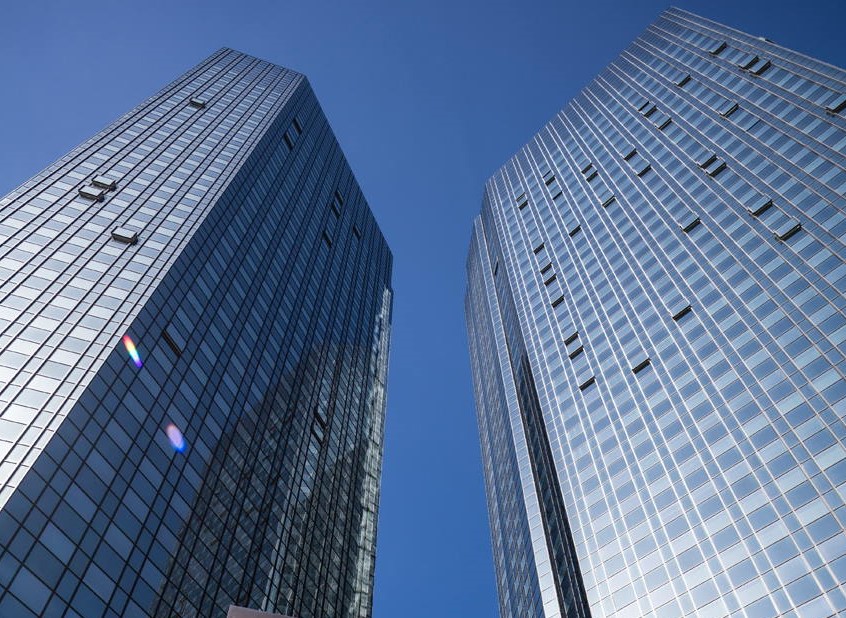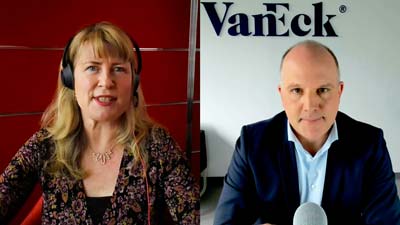The fund provides exposure to a wide array of large- and mid-cap companies within the world’s emerging regions. This broad category of countries has seen its position on the global stage rise significantly in recent years. Whereas this type of exposure would once have been considered exclusively a speculative tactical tool, it is increasingly becoming a core component of a globally-balanced portfolio.
Nevertheless, stocks from emerging economies remain a volatile area of the market. For example, the MSCI Emerging Markets Index has had an annualised standard deviation of 23.8% for the past 10 years, versus 16.1% for the MSCI World.
Correlations to developed equity exposure have slightly increased over the long-term, suggesting the fund provides less diversification benefit than previously. Over the 15-year period through August 2014, the MSCI Emerging Markets Index showed a correlation to the USD-currency returns of the S&P 500, the MSCI Europe, and the broader MSCI World Index of 78%, 83% and 86%,respectively. Five-year correlations remained steady.
The fund does not distribute dividends; therefore it may not suit an investor looking for regular investment income.
Fundamentale Analyse
Emerging-markets stocks first became an appealing asset class in the 2000s, thanks to the confluence of several factors. For one, the Chinese economic growth machine was operating at full speed. Annual GDP growth rates approached 10% as a result of national economic reforms, strong export growth and significant investment in factories, infrastructure and housing.
At the same time, low interest rates throughout the developed world helped drive overall export growth both within emerging markets and farther afield to developed markets. And thanks to China's capital investment spree, commodity prices skyrocketed, benefiting resource-rich countries such as Brazil, Russia, South Africa and Indonesia.
But much of the momentum has since disappeared, and most emerging markets countries have settled into a period of slower GDP growth. China, which is undergoing a transition from an investment- to consumption-driven economy, is already facing related growing pains and has a significantly lower GDP growth rate target of 7.5% for 2014. More broadly, foreign fund flows have grown more volatile and have helped expose countries with relatively weaker fundamentals, causing higher currency and local stock market volatility.
Commodity-driven countries, which managed to postpone necessary political and economic reforms during their boom years, are now seeing the repercussions, with slowing economies and inadequate infrastructure. At the same time, other emerging markets countries such as South Korea have seen weaker consumer spending and worsening business conditions, with PMI numbers revealing contractionary business environments in the last year.
Indexkonstruktion
The MSCI Emerging Markets Index is a free-float market capitalisation-weighted index covering about 20 emerging market countries around the world. It covers approximately 85% of the free float-adjusted market capitalisation of the component markets. The index has about 800 constituents and is reviewed quarterly, with size cut-offs recalculated semi-annually. The universe is initially screened for liquidity, as measured by the value and frequency of trading. The median constituent has a market capitalisation of $2.3 billion. The top geographic exposures are China (18-22% weighting) and South Korea (15-17%) followed by Taiwan and Brazil (10-12% each) and South Africa (6-8%). On a sector basis the index is broadly diversified, with a bias towards financials, which makes up about 25-28% of the total. The second largest sector represented is information technology (14-17%), followed by energy (10-12%), and materials and consumer discretionary (8-9% each). The index is not very concentrated at the stock level, with typically 16-18% in the top 10 names. The top position is Samsung Electronics Co., with a 3-4% weighting, followed by Taiwan Semiconductor Manufacturing (2-3%) and Tencent (1-2%).
Fondskonstruktion
The fund uses synthetic replication to provide exposure to the underlying benchmark, entering a fully-funded swap with parent company Deutsche Bank. Investors’ cash is transferred to Deutsche Bank, which then puts collateral in a segregated account opened in the name of Deutsche Bank and pledged to the fund. The collateral is marked to market daily and its composition can change every day. It mainly consists of U.S., European and Japanese equities from a variety of industries. As of the end of August 2014, its total value was equivalent to 120% of the fund’s net asset value. In compliance with UCITS III rules, the fund’s net counterparty exposure cannot exceed 10% of the fund’s NAV, implying that the collateral must at a minimum be valued at 90% of the fund’s net assets. Collateral will be held and managed by Bank of New York Mellon (Luxembourg). In the case of an enforcement event—which could be any of a number of a wide range of actual and/or potential default or termination events on the part of Deutsche Bank—the fund will be entitled by Luxembourg law at that time to enforce the pledge and sell the collateral assets without giving prior notice to Deutsche Bank. Under the terms of the swap, the counterparty agrees to provide the fund with exposure to the total return of the underlying index, net of any associated taxes, costs or fees. The return from the swap assumes that all dividends paid by the underlying stocks are reinvested in the index. This fund does not pay out any dividend distributions.
Gebühren
The fund’s total expense ratio (TER) is 0.65%, which is at the higher end of funds offering similar exposure. Other costs potentially borne by the unitholder but not included in the TER include swap fees, and bid-ask spreads and brokerage fees when buy and sell orders are placed for ETF shares.
Alternativen
For broad exposure to emerging markets there are many choices out there. Providers that offer ETFs tracking the MSCI Emerging Markets Index include UBS, Amundi, SPDR, ComStage, Lyxor, Source, iShares and HSBC. The cheapest of all (strictly in terms of TER) is the Comstage MSCI Emerging Markets ETF, with a TER of 0.25%. The largest, as measured by AUM, is iShares MSCI Emerging Markets (Inc).
The Vanguard FTSE Emerging Markets ETF also charges the lowest TER, at 0.25%, but the fund tracks a different benchmark which excludes exposure to South Korea.
For alternatives to market capitalisation-weighted exposures, there are the Ossiam ETF Emerging Markets Minimum Variance, the iShares MSCI Emerging Markets Minimum Volatility UCITS ETF and the PowerShares FTSE RAFI Emerging Markets ETF. While the first two funds follow a risk-oriented strategy, the third one employs a fundamental approach. These ETFs tend to offer different sector and country exposures than the MSCI Emerging Markets Index, so performance drivers will likely differ.
Die in diesem Artikel enthaltenen Informationen dienen ausschließlich zu Bildungs- und Informationszwecken. Sie sind weder als Aufforderung noch als Anreiz zum Kauf oder Verkauf eines Wertpapiers oder Finanzinstruments zu verstehen. Die in diesem Artikel enthaltenen Informationen sollten nicht als alleinige Quelle für Anlageentscheidungen verwendet werden.

















